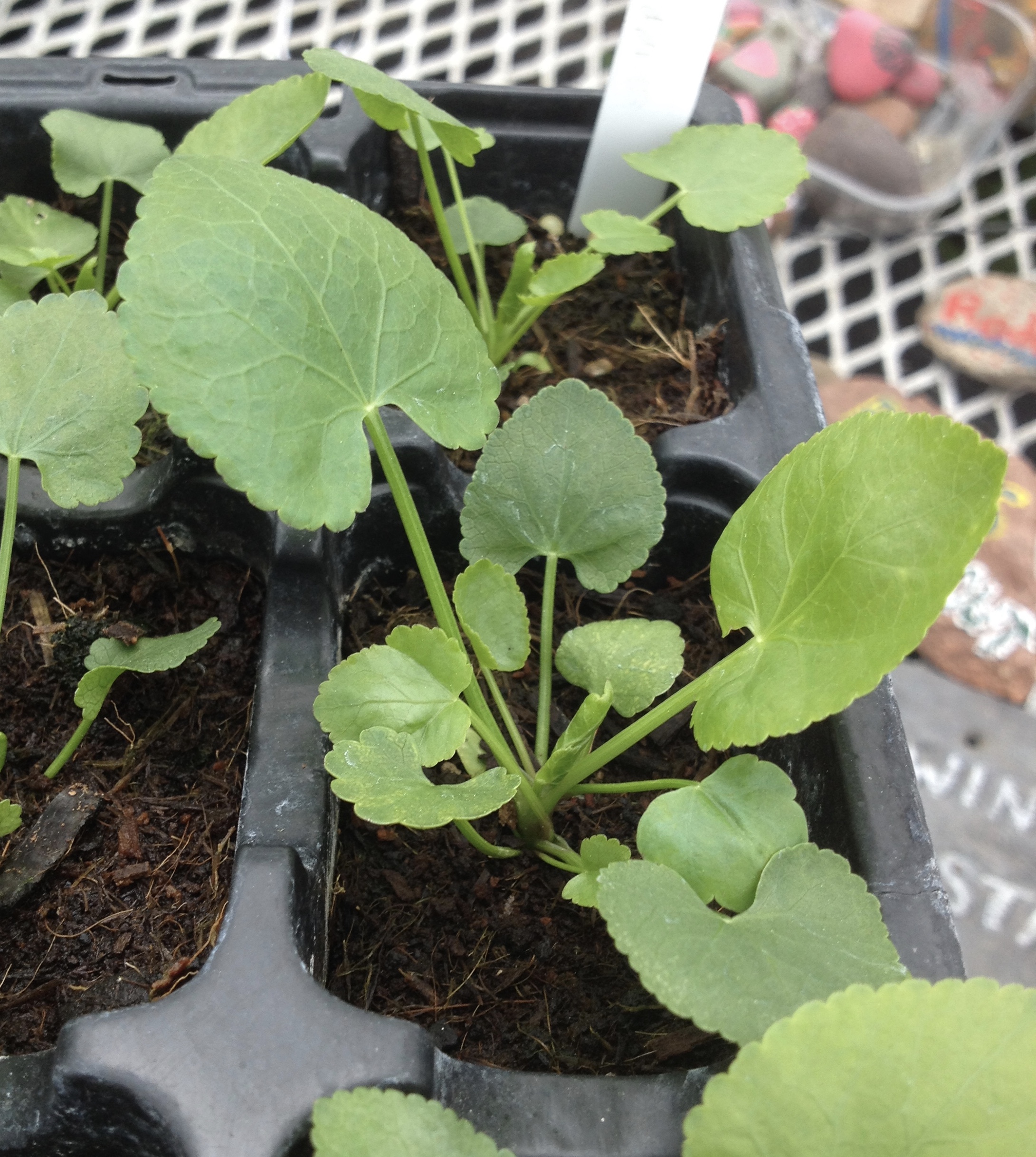Going back to our Roots Or The return of a Medieval Vegetable to St Andrews.
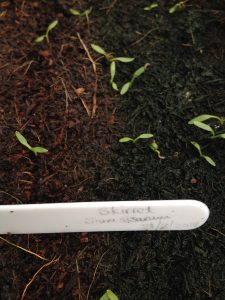
I first heard of Skirrets (Sium sisarum) at the end of 2017 after reading a copy of The Scots Gard’ner by John Reid (published 1683). At first I thought that it was a different name for a common vegetable, but a bit of googling corrected me. It was a popular root vegetable across Europe during the Tudor times, and is thought to have been introduced by the Romans. However, introduction of the potato ousted it from most gardens by 1750, when it stopped being referred to in recipe and gardening books.
My interest was piqued! A little more searching and I found there were a few speciality seed suppliers with Skirret seed in stock. Can you guess what Edible Campus was going to start growing in 2018?
Being super keen, and with access to a greenhouse at the Botanics we sowed the first batch of Skirret seed towards the end of February. By the 1st of April and we had leapt the first Hurdle- Germination.
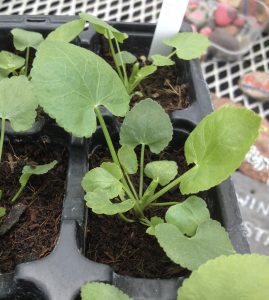
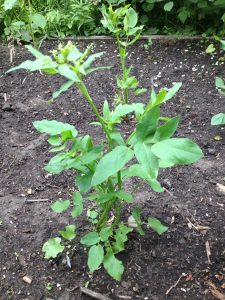
As the seedlings grew and were potted on (these were the most tenderly cared for seedlings in the greenhouse) we observed the differences in leaf shape of the younger single leaves, to the older compound leaves (seen on the planted out July picture).
The Skirret plants were deemed big and strong enough to be planted out in June and were spread between a few of the Edible Campus community gardens. A natural home for the Skirrets was of course the Medieval inspired St Mary’s Garden. Unfortunately, the very dry summer and subsequently empty water butt, combined with the fatal, poor labeling and keen weeding, meant that despite replanting, the crop at that garden was not as good as hoped!
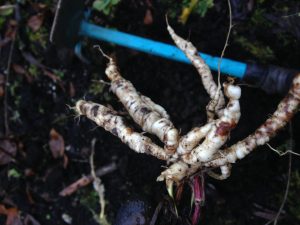
Despite all this, the year ticked on, flowers, followed by seeds, developed on the Skirrets (and were harvested, for resowing) the stems and leaves died back as winter approached. The time had come for the all important taste test. Was all this effort going to be rewarded by a delicious crop?
The 15-20cm roots we had been promised turned out to only be 7cm long, but a quick scrub, and it was time to see whether to keep half the crowns to continue the crop into 2019, or say “well, I guess that’s why the potatoes won after all”.
The taste has been suggested to be a cross between carrot and parsnip with a hint of pepper, and while I wouldn’t disagree, the carrot had the strongest taste with a very mild bit of heat following, they are tasty enough to eat on their own. While we ate them raw (there wasn’t that much on the one root) medieval recipes suggest cooking skirrets in the same manner as carrot or parsnip, or even making into a pie.
Skirrets are more or less perennial, they are said to get woody after a few years of growth, but seeds are plentiful and they will certainly get some space in my own garden. Skirrets can be found at Albany, St Mary’s (probably more abundant next winter!) and Community Garden. Make sure you only harvest half the crown and replant the rest for next year’s Skirret pie. And please record your harvest!
Helena

